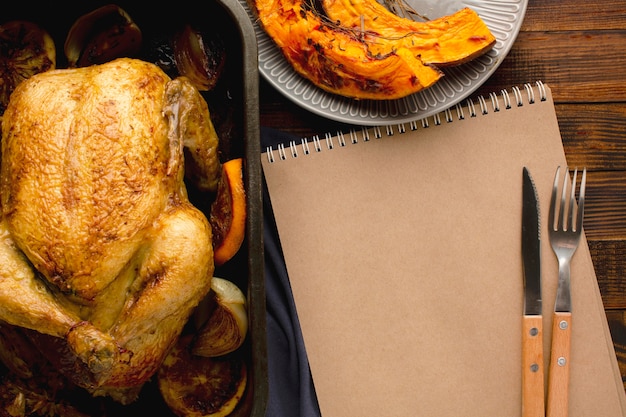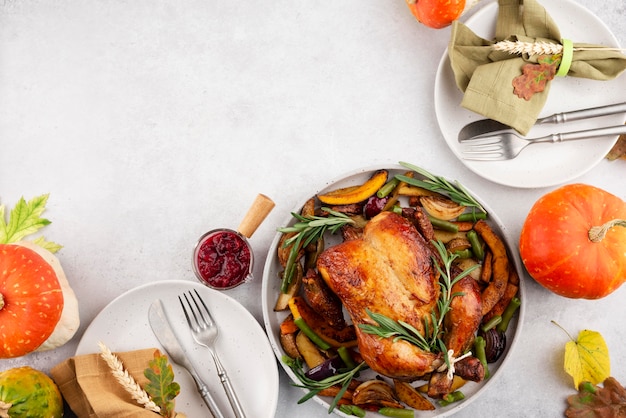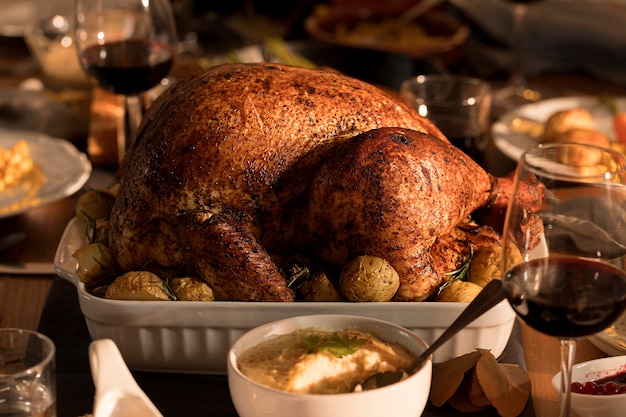You've got a 15-pound turkey, a beautiful centerpiece for your holiday feast. But the pressure's on – you want it cooked to perfection, juicy and tender, not dry and tough. Fear not, dear reader! I'm here to guide you through the process and ensure your turkey is a roaring success.
I've been roasting turkeys for years, and I've learned a thing or two about getting the timing right. My first attempt was a bit of a disaster – I was convinced it was going to be a dry, overcooked mess. My family, bless their hearts, were incredibly patient as I stressed over the temperature and timing. It wasn’t half bad in the end, but I learned a lot that day. Now, I’m a pro at roasting turkeys, and I’m happy to share my knowledge with you.
Part 1: The Basics of roasting a turkey

The first thing you need to know is that roasting time varies depending on the size of your bird. A 15-pound turkey is a fair size, so you'll need to factor that into your cooking time. Remember, different turkeys cook at different rates, depending on their breed and how they were raised.
1.1. Temperature is Key
The most important thing when roasting a turkey is to ensure it’s cooked to the right temperature. The safe internal temperature for a turkey is 165°F (74°C) in the thickest part of the thigh. It’s a good idea to use a meat thermometer to check the temperature. Invest in a good quality thermometer if you don’t already have one, it's an essential tool for any cook.
1.2. The Importance of Resting
Once your turkey is cooked, it’s essential to let it rest for at least 20 minutes before carving. This allows the juices to redistribute throughout the meat, resulting in a more tender and flavorful turkey. It’s tempting to carve into the turkey as soon as it comes out of the oven, but trust me on this one, it’s worth the wait!
Part 2: Determining Your Turkey's Cooking Time

Now, let’s dive into the details of calculating the perfect roasting time for your 15-pound bird.
2.1. Rule of Thumb
A good rule of thumb is to allow about 15 minutes per pound of turkey at 325°F (160°C). So, for a 15-pound turkey, you’d be looking at roughly 3 hours and 45 minutes. However, this is just a guideline. The actual cooking time will vary depending on the size and shape of your turkey, as well as the oven you’re using.
2.2. Checking for Doneness
Once your turkey has been roasting for about 3 hours, it’s time to start checking the temperature. Insert a meat thermometer into the thickest part of the thigh, making sure you don’t touch the bone. If the temperature is 165°F (74°C) or higher, your turkey is cooked. If not, continue roasting for another 15-30 minutes, checking the temperature every 15 minutes.
2.3. Factors that Affect Cooking Time
Several factors can affect the cooking time:
- Oven Temperature: A higher oven temperature will cook the turkey faster, but it can also lead to a drier bird.
- Turkey's Shape: A turkey with a wider breast will take longer to cook than a turkey with a more streamlined shape.
- Stuffing: If you are stuffing the turkey, it will take longer to cook because the stuffing will need to reach 165°F (74°C) as well.
- Oven Type: Different ovens heat at different rates. An older oven might require a longer cooking time than a newer model.
Part 3: Don’t Forget the Stuffing!

No turkey is complete without a good stuffing, right? But when it comes to stuffing, there’s a lot of conflicting advice out there.
3.1. Stuffing Inside or Outside the Bird?
Some people prefer to stuff the turkey, while others cook it separately. The main concern with stuffing the turkey is that the stuffing may not cook through properly, and could even be a breeding ground for bacteria. To be on the safe side, it’s generally recommended to cook your stuffing separately. If you do stuff your turkey, make sure the stuffing is cooked through to at least 165°F (74°C).
3.2. Stuffing Tips
If you’re going to stuff your turkey, it’s important to use moist ingredients, such as bread, vegetables, and broth. Avoid using dry ingredients, such as rice or pasta, as these can dry out the stuffing.
3.3. The Importance of Temperature
Regardless of whether you stuff the turkey or cook it separately, it’s crucial to make sure the stuffing reaches 165°F (74°C). This is the only way to ensure that all the bacteria have been killed.
Part 4: Preparing Your Turkey for Roasting
Now that we’ve covered the basics, let’s get your turkey ready for roasting.
4.1. Thaw the Turkey
First things first, make sure your turkey is completely thawed. The safest way to thaw a turkey is in the refrigerator, allowing at least 24 hours per 5 pounds of turkey. You can also thaw a turkey in cold water, but this should only be done as a last resort.
To thaw in cold water, place the turkey in a container large enough to hold it submerged. Change the water every 30 minutes to ensure it remains cold. This method takes about 30 minutes per pound, but it can be risky if not done carefully.
4.2. Pat the Turkey Dry
Once the turkey is thawed, pat it dry with paper towels. This will help the skin crisp up nicely in the oven.
4.3. Season the Turkey
Next, season the turkey generously with salt, pepper, and any other herbs or spices you like. I like to use a simple blend of salt, pepper, garlic powder, and onion powder. But feel free to get creative and add your own personal touch.
4.4. Roast the Turkey
Now, you’re ready to roast! Place the turkey in a roasting pan and roast in a preheated oven at 325°F (160°C). You can add a cup of water to the bottom of the roasting pan to create steam, which will help keep the turkey moist.
Part 5: The Art of Basting
Basting the turkey is a crucial step in achieving a juicy and flavorful bird.
5.1. What is Basting?
Basting involves spooning the pan drippings over the turkey while it’s roasting. This helps keep the skin moist and prevents it from drying out.
5.2. When to Baste
You can start basting your turkey after about an hour of roasting. Baste it every 30-45 minutes, or as often as you like. Some people prefer to baste the turkey with a mixture of butter and herbs. Experiment with different basting mixtures and find what you like best.
5.3. Basting Tips
If you find that the pan drippings are getting too thick, add a little bit of water or chicken broth to thin them out. You can also add a few slices of onion or celery to the roasting pan to add flavor to the drippings.
Part 6: Turkey Trouble?
Sometimes, despite our best efforts, things don’t always go according to plan.
6.1. What if the Turkey is Burning?
If the turkey is starting to burn, you can tent it with foil to protect the skin.
6.2. What if the Turkey is Overcooked?
If you overcook the turkey, there’s not much you can do about it, but it’s always better to err on the side of undercooked than overcooked.
6.3. What if the Turkey is Undercooked?
If the turkey is undercooked, you can always put it back in the oven to roast for a bit longer. Just make sure you check the temperature every 15 minutes to ensure it’s cooked through.
Part 7: turkey tips and Tricks
I’ve learned a few tricks over the years that have made my turkey roasting game stronger.
7.1. Use a Roasting Rack
A roasting rack will help air circulate around the turkey, ensuring that it cooks evenly.
7.2. Add a Little Bit of Butter
Before roasting, rub the turkey with a little bit of butter to help the skin get crispy.
7.3. Use a Meat Thermometer
A meat thermometer is essential for making sure your turkey is cooked to the right temperature. It’s a small investment that can save you from a lot of stress.
7.4. Don't Overcrowd the Oven
If you’re cooking other dishes in the oven, make sure there’s enough space around the turkey for the heat to circulate evenly. You can always cook the side dishes separately, or in a separate oven if you have one.
7.5. Brining the Turkey
Brining is a technique that involves soaking the turkey in a salt water solution for several hours. This helps to retain moisture and make the turkey more flavorful.
To brine a turkey, simply dissolve salt in water, then add the turkey. Let it soak in the refrigerator for 4-24 hours, depending on the size of the turkey. Don't be afraid to get creative with your brine - you can add herbs, spices, or even citrus fruit to enhance the flavor.
Part 8: The Best turkey recipes
Now that you have all the basic knowledge, you might be ready to try out some recipes. Here are a few of my favorites:
- Basic roast turkey recipe: This classic recipe is a perfect starting point.
- Herb-Roasted Turkey: This recipe is a little bit fancier, but still easy to make.
- Spiced Roast Turkey: If you like your food with a bit of kick, try this recipe with a blend of warming spices.
- smoked turkey: For a truly unique flavor, try smoking your turkey.
- Roasted Turkey with Cranberry Sauce: This classic combination is always a crowd-pleaser.
Part 9: Serving the Turkey
Finally, it’s time to carve and serve your beautiful, golden-brown turkey.
9.1. Carving the Turkey
Use a sharp knife to carve the turkey. Start by removing the legs and thighs, then the wings. Finally, carve the breast into slices.
9.2. Serving the Turkey
Arrange the turkey on a platter and serve with your favorite side dishes. Traditional accompaniments include mashed potatoes, gravy, stuffing, cranberry sauce, and green beans.
Part 10: FAQs
I know there are always a million questions when it comes to cooking a turkey. Here are a few of the most frequently asked questions:
| Question | Answer |
|---|---|
| How do I know if my turkey is done? | The best way to tell if your turkey is done is to use a meat thermometer. Insert the thermometer into the thickest part of the thigh, making sure you don’t touch the bone. If the temperature is 165°F (74°C) or higher, your turkey is cooked. |
| What if my turkey is overcooked? | If your turkey is overcooked, the meat will be dry and tough. There’s not much you can do to salvage an overcooked turkey, but it’s still edible. |
| What if my turkey is undercooked? | If your turkey is undercooked, it’s important to cook it for a bit longer to ensure that it’s safe to eat. Cook the turkey for another 15-30 minutes, checking the temperature every 15 minutes. |
| How do I store leftover turkey? | Leftover turkey should be stored in the refrigerator in an airtight container. It should be eaten within 3-4 days. |
| Can I freeze leftover turkey? | Yes, you can freeze leftover turkey for up to 2 months. To freeze, wrap the turkey tightly in plastic wrap and then aluminum foil. |
| What if my turkey has popped its skin? | This is a common issue, especially with larger turkeys. It doesn't affect the taste, but it can be unsightly. You can try to tuck the skin back in place, but it's likely to pop again. The important thing is to make sure the turkey is cooked through. |
And there you have it! Roasting a 15-pound turkey might seem daunting, but with a bit of planning and these tips, you’ll be able to create a delicious and impressive centerpiece for your next gathering. Good luck, and happy roasting!
Everyone is watching

Corn on the Cob: The Ultimate Guide to Perfectly Cooked Ears
Healthy MealsAh, corn on the cob. Just the name evokes images of sunny days, barbecues, and that sweet, juicy flavour that ...

Perfect Pork Roast Oven Cooking Time: A Guide to Delicious Results
Healthy MealsThere's something truly satisfying about a perfectly roasted pork. The aroma alone is enough to make your mout...

Ham Cooking Time: How Long to Bake, Smoke, or Boil a Delicious Ham
Healthy MealsAh, ham. It's a classic, isn't it? A real crowd-pleaser, especially around holidays. And when done right, it'...

Scallops: The Ultimate Guide to Perfect Cooking
Healthy MealsAh, scallops. Those delicate, sweet, and utterly delicious morsels of the sea. They hold a special place in my...

Spaghetti Squash: The Ultimate Guide to Cooking and Serving
Healthy MealsRemember that time you saw spaghetti squash at the supermarket, looking all bumpy and strange, and thought, "W...
